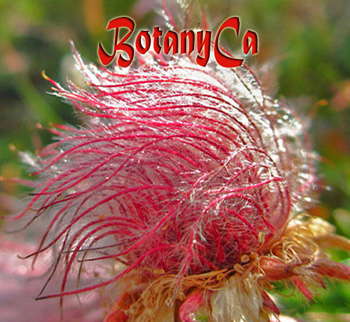Diphylleia cymosa plant portrait
I was actually preparing something else for today. Then a small packet with ‘precious’ seeds inside arrived.
Besides announcing new seeds, even on the other prepared post, I was first expressing my gratitude and thanks to all those who are contributing with interesting seeds for BotanyCa Shop. It would otherwise be impossible to offer various species, especially native to North America, which actually do not grow wild in Ontario, or even in Canada for that matter.

Diphylleia cymosa flowering in late spring
On to Diphylleia cymosa, the American Umbrella Plant.
I am excited for these seeds for a few reasons, one being my penchant for studying the germination patterns of Berberidaceae, you know… Caulophyllum, Jeffersonia, Epimedium, Podophyllums and others in this family.
They all bear a few similar characteristics, including having seeds that need to be sown fresh in order to germinate; or kept moist, to allow later sowing. I admired this large perennial many years ago in the now closed Lost Horizons Gardens.
Diphylleia cymosa is a native of southeastern USA, particularly from the Blue Ridge Mountains of the southern Appalachians, where according to Flora of North America, it forms “dense colonies on moist slopes in mixed deciduous forests and along streams”.
I call it American Umbrella Plant because there are other 2 species in this genus, D. sinensis (from China) and D. grayi (from Japan and Sakhalin).
A very large perennial, it is growing from a short rhizome that produces 1 leaf or one flowering stem per year (with 2 leaves); a similarity with Podophyllum I would say. The large leaves are simple, 2-parted, each part with 5-9 lobes.
In culture it prefers a moist, rich substrate but can also grow in average soils, only that it remains shorter in stature.

American Umbrella Plant flowers
The white flowers appear in late spring in a terminal cyme (hence cymosa). One cannot deny the resemblance of these flowers to those of Jeffersonia dubia white form!
Later, the maturing dark-blue berries will make a striking contrast with the red pedicels!
How are the seeds looking? I think they are also very handsome, seeds-speaking 😊
A few were malformed, it happens, so I said let’s have a look ‘inside’. A very nice surprise! I found the embryo to be in the torpedo stage (with the shoot apical meristem and root apical meristem formed), so the germination shouldn’t be difficult after proper stratification.

Diphylleia cymosa seeds; to the right a dissected seed showing torpedo stage embryo
Those who have proper space in the garden, do not hesitate to give it a try. It makes a striking specimen plant for the woodland garden!
Most likely, like all rhizomatous plants, it needs a few years to establish but afterwards it will remain a long lived plant to be admired, from spring to fall for many years to come.
I will follow you in the journey of sowing a few seeds to witness their germination and see how the seedlings develop! Among a few Podophyllums I can certainly also grow one Umbrella Plant.
I again, kindly call attention to the moist-packed seeds category: the Seeds List (warm germinating species with dry seeds can be purchased all winter long).





